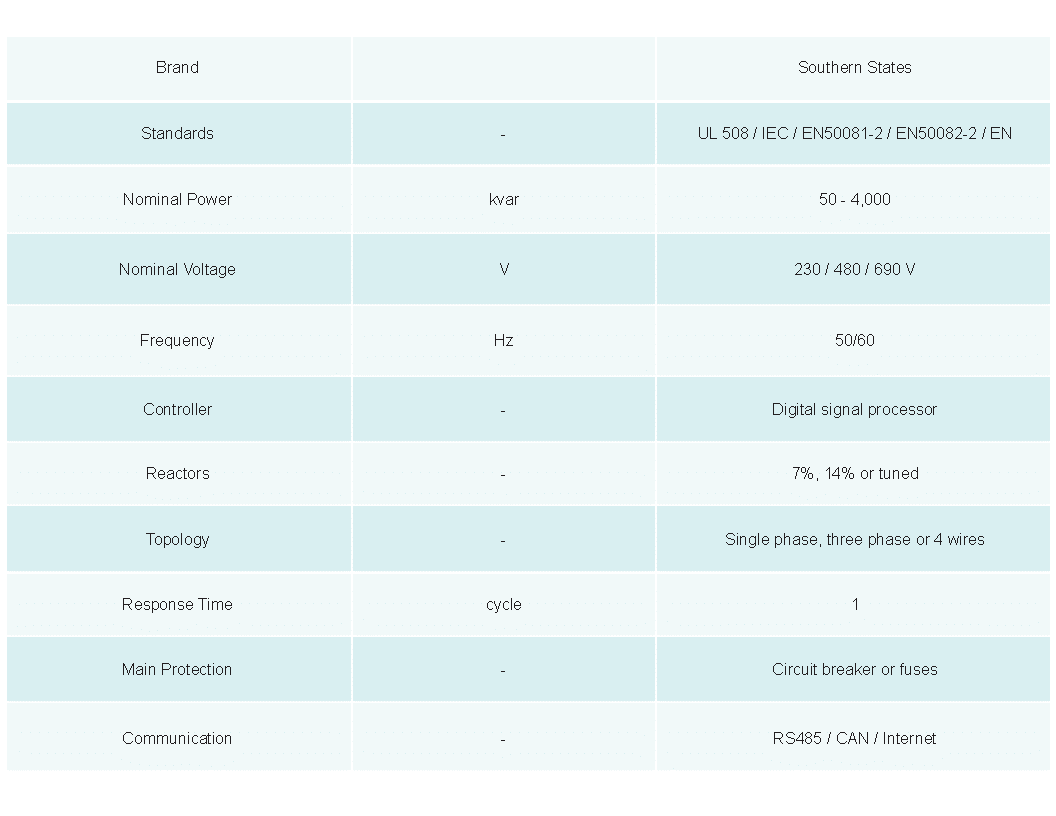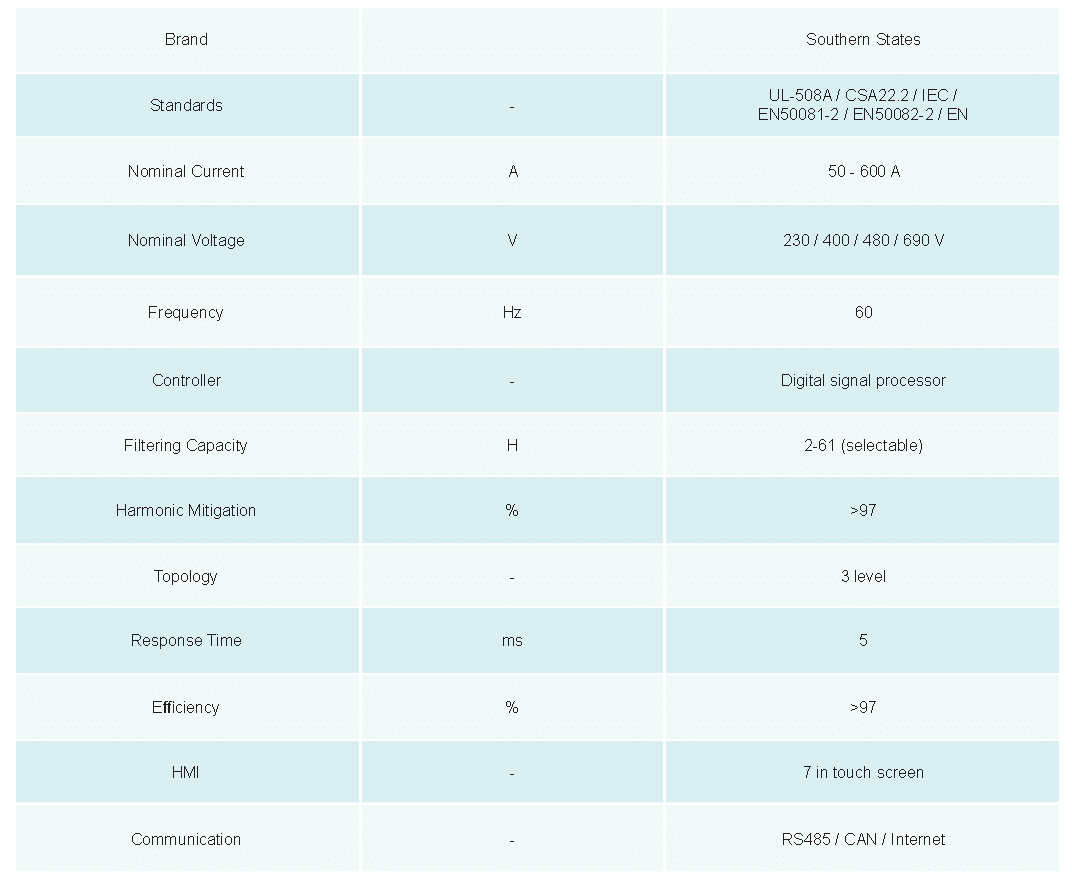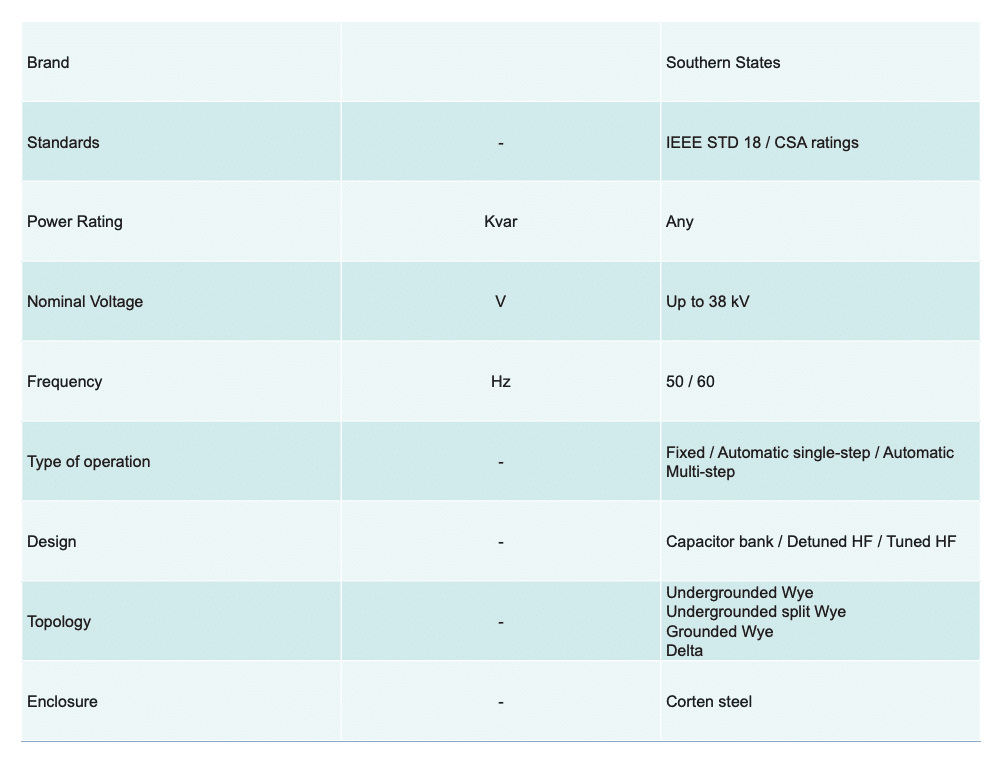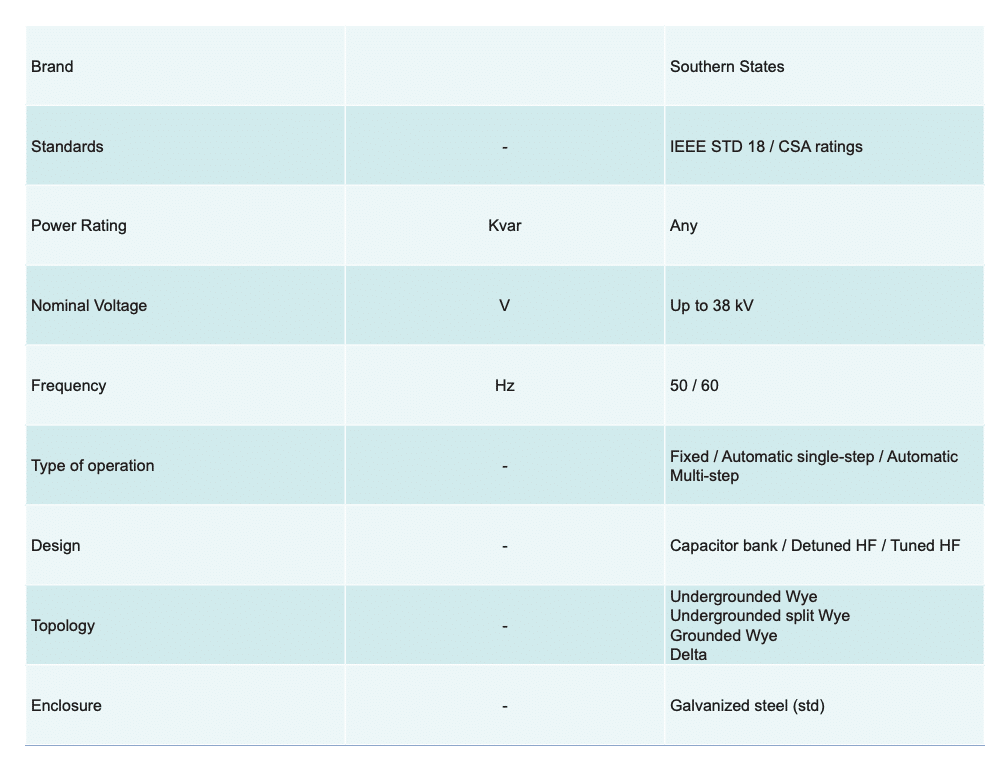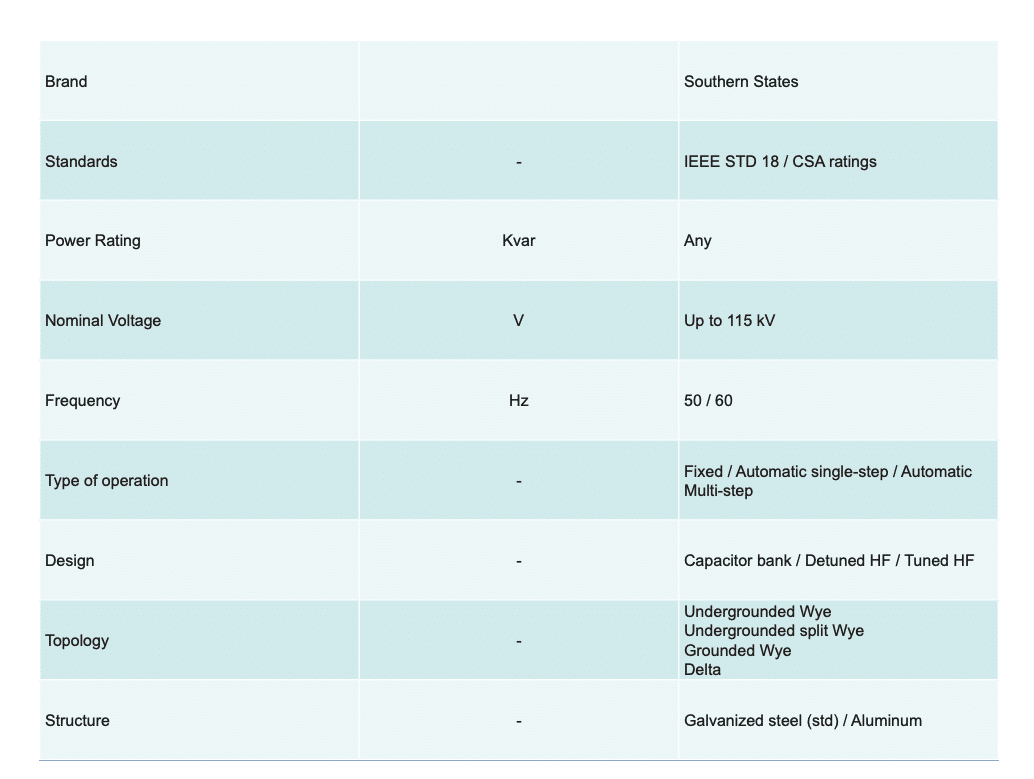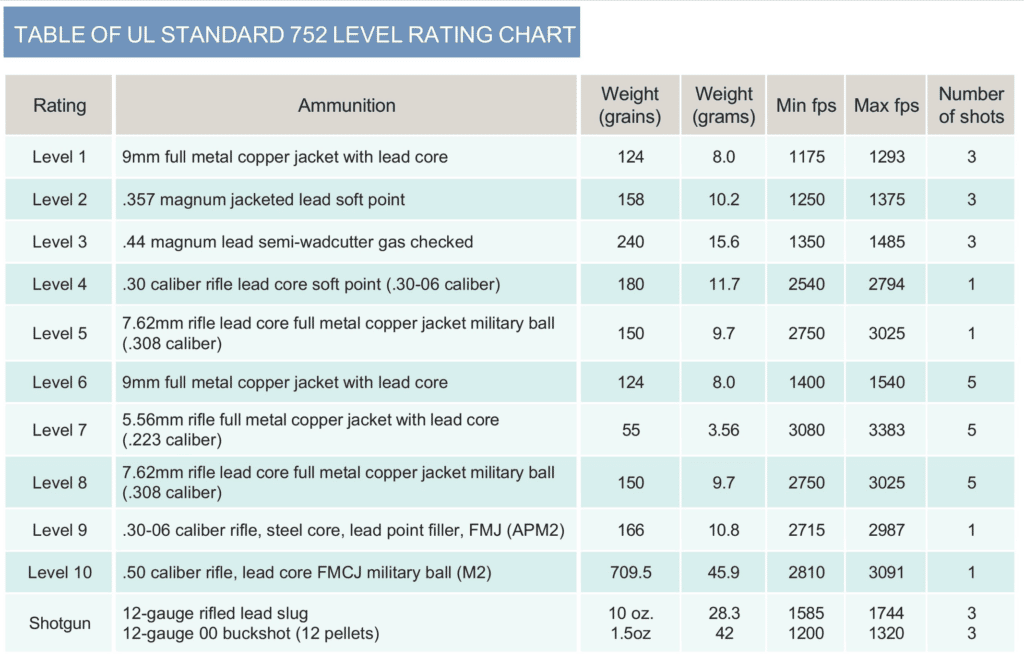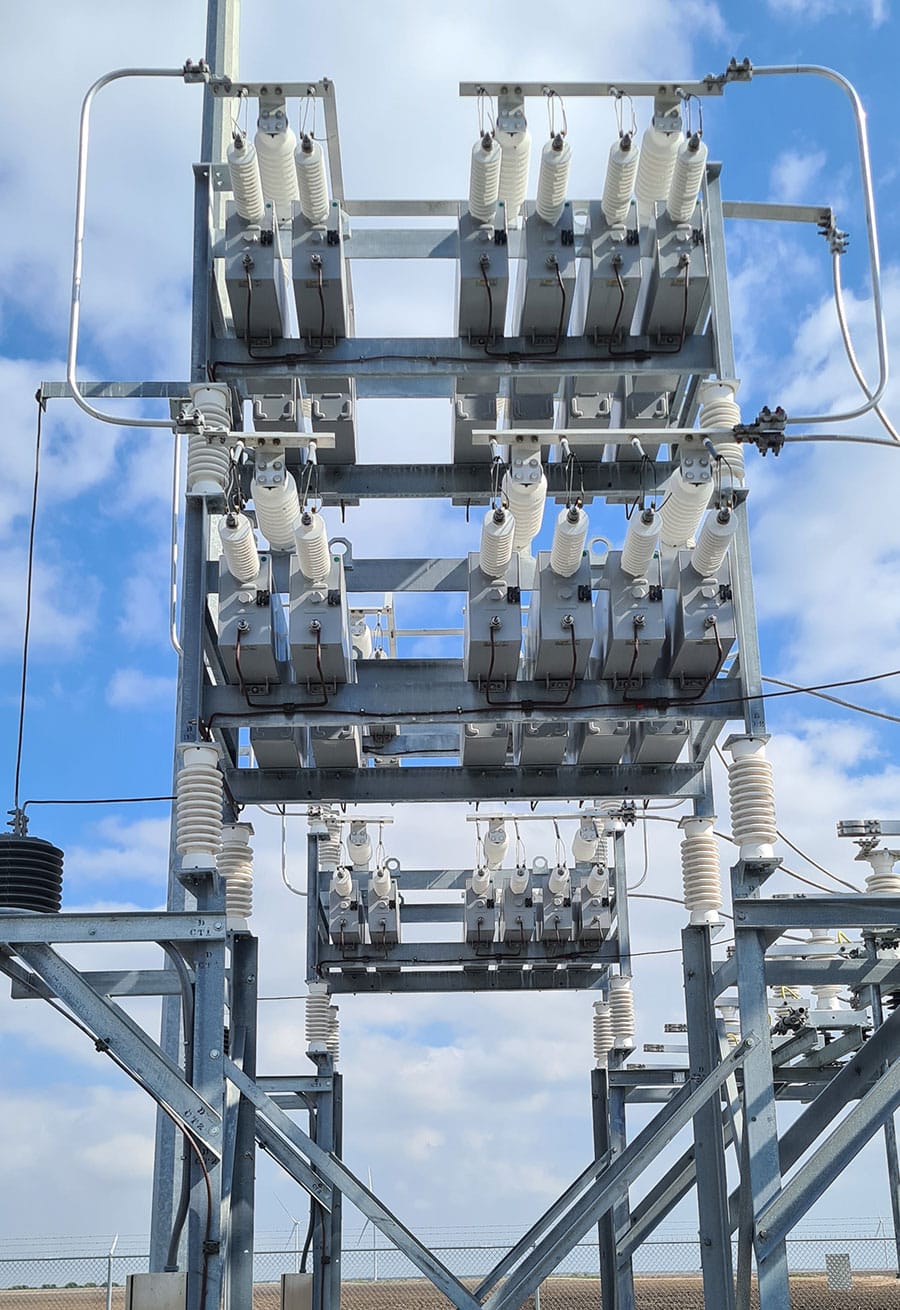
We offer the best service and lead time in Medium Voltage and High Voltage reactive power equipment.
Our vast experience designing and supplying MV Harmonic Filters and Capacitor Banks will ensure a reliable and safe operation.
As the demand for electricity continues to rise, the need for efficient energy storage and power factor correction becomes increasingly important. Capacitor banks, composed of multiple capacitors connected in series or parallel, play a crucial role in storing electrical energy and improving power factor in a wide range of applications.
Available options
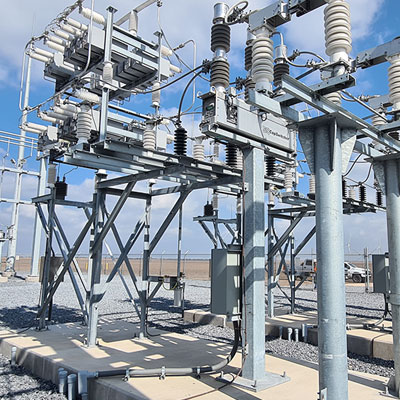
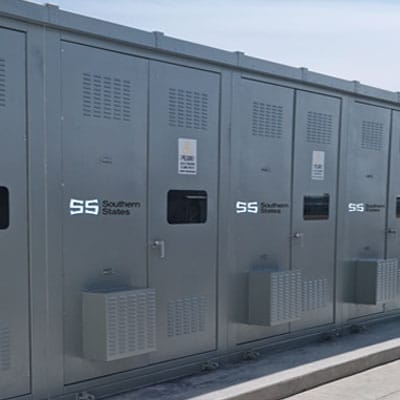
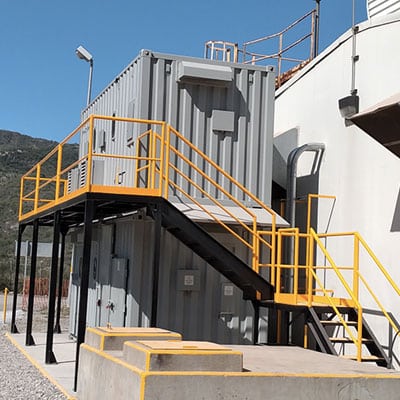
Medium & High Voltage Capacitor Banks
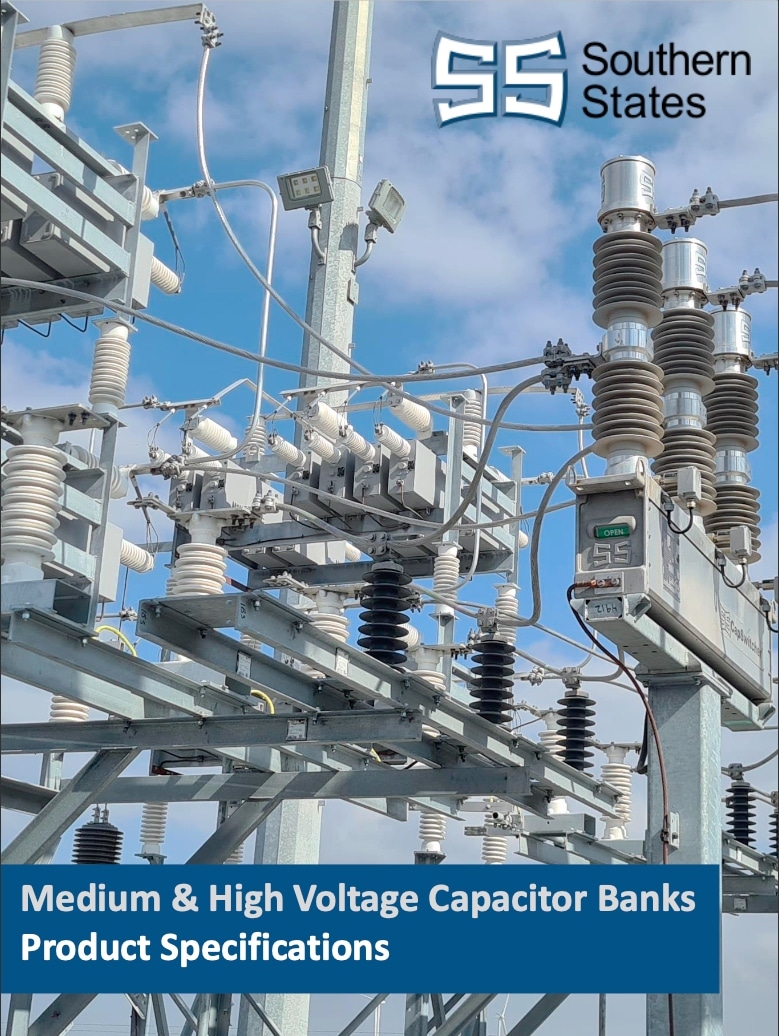
Cap Banks Applications
Capacitor banks are a crucial part of energy management in a wide variety of industries. Here are some of the ways our customers use cap banks from Southern States:

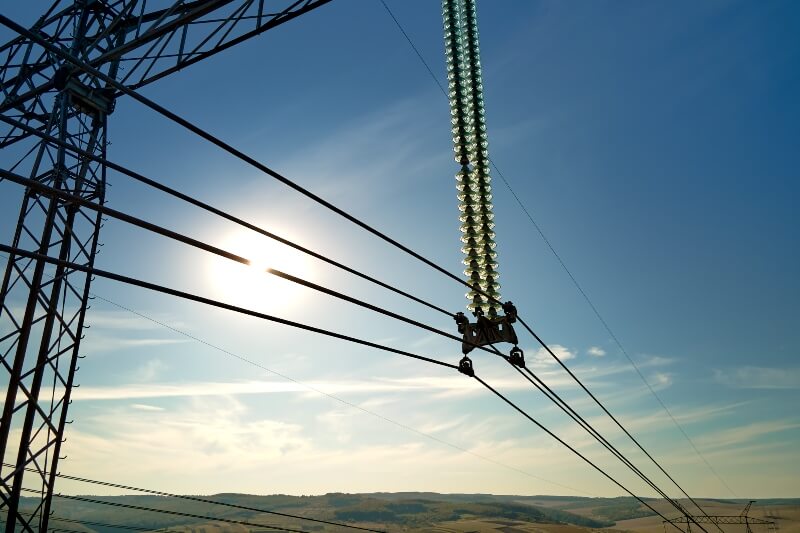

What Sets Southern States Apart From Other Capacitor Bank Suppliers
When you need capacitor banks for power factor correction or reactive power support, Southern States has the solutions you need. With decades of experience in supplying industrial capacitor banks, our team can provide a customized solution that is tailored to your specific application and unique needs.
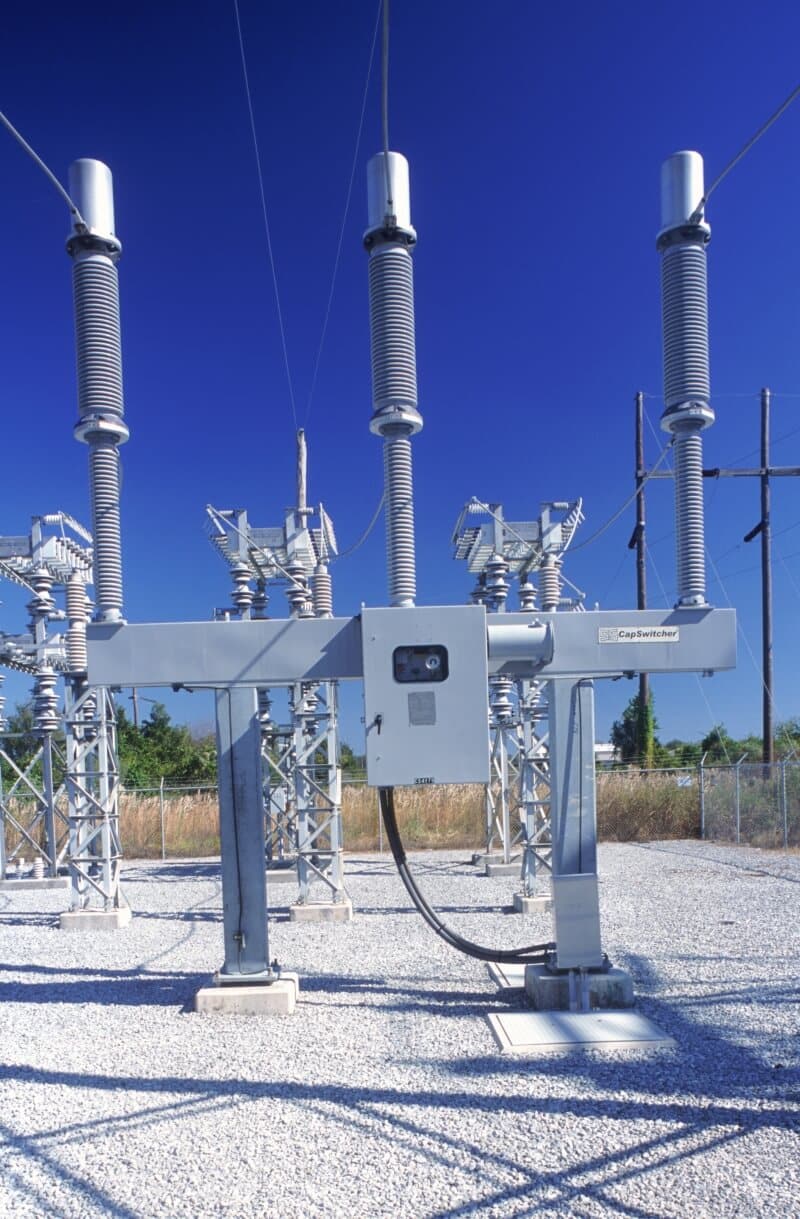
Transform Your Electrical Energy Power System
The modern electrical grid faces immense challenges in meeting reactive power demands while maintaining stability and efficiency. Fluctuating power flows, intermittent renewables, and growing loads with power electronics all contribute to voltage fluctuations, lagging power factor, and equipment damage from harmonics.
Capacitor banks provide a versatile solution, acting as a reactive power reservoir to smooth variations and optimize grid performance.
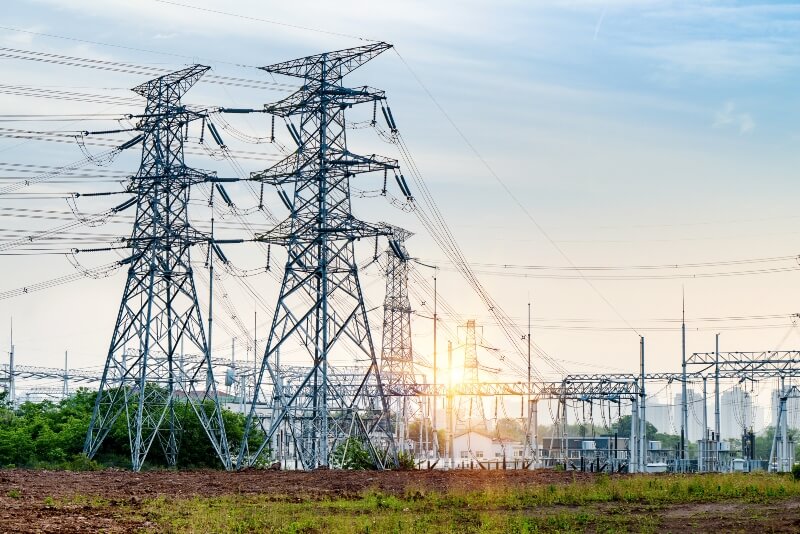
Voltage Stability
By providing reactive power support, capacitor banks help maintain voltage stability in transmission lines and distribution networks. They compensate for voltage drops caused by inductive loads.
Power Factor Correction
Capacitor banks offset inductive loads that cause lagging power factors. Correcting power factors reduces losses and improves transmission efficiency.
Understanding Cap Banks
Capacitor banks are an integral component in electrical systems that help optimize network performance. They function by storing energy in electric fields within capacitors and releasing it to supply reactive power as needed.
What is a Capacitor Bank?
How Capacitor Banks Work
What is the difference between a capacitor bank and a harmonic filter?
Now, when we introduce a reactor into this capacitor bank configuration, we transform it into a harmonic filter. The term “harmonic filter” is derived from the synergy between the capacitor’s capacitance and the reactor’s inductance, which collectively establish a low-impedance pathway tailored to a specific frequency. To simplify this concept, think of harmonic filters as constructing a high-speed express lane with minimal resistance for electrons operating at a particular harmonic frequency.
By carefully selecting the appropriate combination of capacitance and inductance, we can effectively engineer this low-resistance pathway, designed to filter out and mitigate current harmonics from the overall system.
Is capacitor bank switching complex?
Energization:
Capacitor banks initially resemble a short circuit during energization, causing voltage drops and transient overvoltages. While not typically harmful to utility equipment, they can affect sensitive customer equipment.
In back-to-back arrangements, energizing the second bank may lead to high inrush currents, shortening the device’s life.
De-energization:
When a capacitor switch opens, the voltage across the contacts combines system and capacitor bank voltages. This can cause re-strikes, generating overvoltages approaching up to 3 p.u.
Re-strikes can trigger issues like ruptured capacitor cans, blown fuses, and contact wear, leading to dielectric failures.
In summary, managing transient effects during capacitor bank switching is crucial. Specialized products, like Southern States’ CapSwitcher®, offer an effective solution. Learn more about CapSwitcher®, a field-proven approach by Southern States.
How do I choose a capacitor bank capacity?
Sizing a capacitor bank involves determining the appropriate capacitance, voltage rating, and configuration of capacitors to achieve specific objectives in an electrical system. The primary goal is usually to improve power factor, reduce energy costs, and enhance voltage stability. Here are the steps to size a capacitor bank:
Power Factor Analysis
Start by conducting a power factor analysis of your electrical system to determine the existing power factor and identify areas where improvement is needed. A power factor below 0.95 (or 95%) is often considered suboptimal.
Determine the Required Power Factor
Decide on the desired or required power factor for your system. This is typically based on utility requirements, cost-saving objectives, or equipment specifications. Common target power factors are 0.95, 0.98, or unity (1.0).
Calculate the Required Reactive Power (kVAR)
The required reactive power can be calculated using the formula: Reactive Power (kVAR) = Active Power (kW) x (tan Φ1 – tan Φ2), where Φ1 represents the existing power factor angle, and Φ2 represents the desired power factor angle (usually close to 0° for unity power factor). However, it’s important to note that this calculation is often more complex in practice, as reactive power needs tend to be variable rather than constant. Nevertheless, this formula can provide a useful initial estimate.
Select the Capacitor Voltage Rating
Choose a capacitor voltage rating that is compatible with the system voltage. The voltage rating should exceed the peak voltage in the system to ensure safety and reliability.
Determine the Capacitor Configuration
Capacitor banks can be configured in many ways. There are many configurations for a capacitor bank. The optimal will depend on the application, voltage level and total power.

